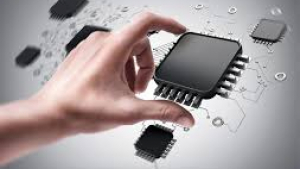Introduction The global remote I/O module market is projected to reach $4.7 billion by 2025, driven by the convergence of Industry 4.0 and IoT. Asia-Pacific (China, India) will account for over 50% of demand growth. This report analyzes technical trends, industry standards, and IoT integration strategies, with a focus on leading brands like EBYTE.
1. Industry Standards & Technical Requirements
Core Standards include IEC 61131-2, which mandates EMC resilience and modular design, requiring stable operation at -40°C to +85°C with vibration resistance ≥5g. The IEEE 1451 standard enables plug-and-play smart sensor integration, while OPC UA will dominate industrial protocols, with over 85% supporting OPC UA over TSN (Time-Sensitive Networking) by 2025.
Key Performance Metrics emphasize IP65/IP67 protection ratings for general industrial use and IP68 for harsh environments like mining. Communication protocols such as PROFINET, Modbus RTU/TCP, and EtherNet/IP remain mainstream, with MQTT/OPC UA emerging for cloud integration. Power consumption is critical, with typical modules requiring ≤2W and low-power modes (e.g., EBYTE ERIO-4012 sleep mode) achieving ≤0.5W.
2. Competitive Analysis of Leading Brands
Siemens (Germany) offers the ET 200SP HA, designed for high-precision applications like automotive assembly lines and chemical process control. It supports PROFINET IRT with ≤1ms cycle times and accommodates 32 I/O modules per rack.
Rockwell Automation (U.S.) focuses on safety and diagnostics with its POINT I/O 1734, which integrates CIP Safety for SIL 3 certification and IO-Link for sensor-level diagnostics. It is widely deployed in food packaging and semiconductor cleanrooms.
EBYTE (China) stands out with cost-effective solutions like the ERIO-4012 and ERIO-5000 series. The ERIO-4012 reduces wiring costs by 30% compared to Siemens, supports Modbus RTU/TCP, and operates at -40°C to +85°C with IP68 protection. The ERIO-5000 adds edge intelligence via an ARM Cortex-M7 processor and SQLite local caching, enabling real-time analytics in smart factories.
Case Studies highlight EBYTE’s impact: a Southeast Asian palm plantation deployed 500 ERIO-4012 nodes to cut wiring costs by 45%, while a Chinese CNC factory reduced predictive maintenance false alarms by 22% using the ERIO-5000.
3. IoT Solution Design Strategies
Architecture Principles prioritize edge-cloud synergy. At the edge, modules like EBYTE’s ERIO-5000 handle data acquisition, filtering, and threshold alerts. Cloud integration via OPC UA/MQTT connects to platforms like AWS IoT or Alibaba Cloud for advanced analytics. Security is ensured through hardware encryption (e.g., TI CC3220) and TLS 1.3, with EBYTE modules supporting key rotation and IP whitelisting.
Typical Use Cases include smart agriculture, where soil sensors paired with EBYTE ERIO-4012 modules and LoRaWAN gateways reduce water usage by 30% and boost fertilizer efficiency by 20%. In smart factories, Siemens ET 200SP modules link PLCs to edge servers running digital twins, improving overall equipment effectiveness (OEE) by 15%.
4. Future Technology Trends 5G + TSN Integration will see 30% of industrial I/O modules adopting 5G URLLC (Ultra-Reliable Low-Latency Communication) by 2025, achieving ≤1ms latency. AI-driven edge computing will leverage lightweight models like TensorFlow Lite for anomaly detection, with EBYTE’s upcoming ERIO-6000 series integrating NPUs (Neural Processing Units). Sustainability efforts will focus on solar-powered modules and recycled materials, exemplified by EBYTE’s photovoltaic I/O solutions.
5. Selection Guidelines For high-end applications like automotive or semiconductors, Siemens and Rockwell offer precision and safety. Cost-sensitive scenarios such as agriculture or mining benefit from EBYTE’s balance of performance and total cost of ownership (TCO). IoT integration demands MQTT/OPC UA compatibility to avoid protocol conversion costs.
Data Sources: MarketsandMarkets 2024, EBYTE Whitepapers, Industry Case Libraries.








